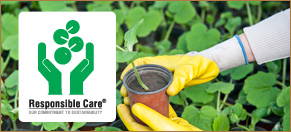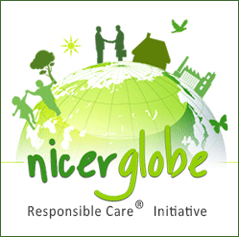


S. Ganesan
Chairman, International Treaties Expert Committee
Indian Chemical Council
E mail: tsganesan@rediffmail.com
It was waiting to happen and it happened. On the last day of fourth Conference of Parties (COP-4) of Stockholm Convention held in Geneva (4th – 8th May'09) – developing countries collectively took on their wealthy counterparts for the latter's failure in fulfilling financial commitments. They pointed out that it's pointless to keep adding more chemicals to the Convention's proscriptive POPs list without providing obligatory financial support under Article 13 of the Convention. Sparks of ire that started at 5 p.m. on Friday, 8th May'09 snowballed into a loud rage that continued well into the wee hours of Saturday, 9th May'09 and threatened to block adoption of major decisions. Thanks to backroom parlays personally by UNEP's Executive Director Achim Steiner and deft diplomatic moves chiefly by India and China, protesting countries finally agreed – albeit reluctantly – to adopt the crucial decision of adding new chemicals to the existing POPs list. One observer from sidelines commented that while it took more than 10 years for developing countries in WTO to protest against unkept promises and protectionist measures, the process took just 5 years under Stockholm Convention . Not all readers would be completely familiar with Stockholm Convention. I therefore narrate below relevant details & developments.
What is Stockholm Convention?
The Stockholm Convention is a legally binding, chemical trade related multilateral environment agreement (MEA) that entered into force on May 17, 2004. As of now 163 countries are Parties to the Convention. The main objective of the Convention is to eliminate production, trade and use of chemicals broadly termed as Persistent Organic Pollutants, simply called POPs.
Chemicals that are POPs have following characterizes.
- they are toxic, persistent in environmental compartments and resist degradation.
- they evaporate and travel long distances through air and water.
- they bio accumulate.
Is Stockholm Convention a Predatory weapon?
The Convention may become a predatory weapon in the hands of vested interests if sharp questions are not asked now. World exports in chemicals is much larger than the export in agricultural products.
World Exports in Chemicals & Agri Products in 2007 ($bn)
|
|||||||||||||||
European Union (EU-27) has a major share of as much as 55% in world's export of chemicals as shown in the table below.
|
||||||||||
The tussle between developed and developing countries for a better share of agri trade under WTO is well known. Industry observers say that similar tussle would soon crop up in case of chemical trade too. The forum for this tussle will not be WTO but chemical trade related MEAs such as the Stockholm Convention, Rotterdam Convention etc. The tussle will be mainly between EU-27 and the developing country bloc led by China and India. There is valid evidence for this grim forecast.
EU-27 – the nursery for POP listing proposals
Stockholm Convention has 163 countries as parties to the Convention. However it is European Union that plays a dominant and hegemonic role in POP listing of chemicals. Among the recent chemicals added to the Convention's POPs list, all nominations with the exception of one came from the EU.
|
|||||||||||||||||||||||||||
People with the knowledge of the chemical trade think that the EU has strong trade interests in POP listing generic chemicals as apparently, the EU chemical industry stands to benefit most from eliminating their production and use through Stockholm Convention. Each generic chemical eliminated might benefit market growth of a proprietary chemical from the EU- the largest exporter of chemicals in the world.
Evasive funding: Article 13 of the Stockholm Convention is about financial assistance to developing countries under the Convention. It is replete with such phrases as:
" The developed country Parties shall provide new and additional financial resources to enable developing country Parties…. to meet the agreed and full incremental costs…. under the Convention"
"Developed country Parties…. may also provide developing country Parties ….avail themselves of financial resources…."
But all these promises remain only in paper until now. With every new addition to the POP list, developing countries lose one widely used inexpensive generic chemical. Stopping its production, sale and exports would result in significant loss of invested capital, revenues (including export revenues) besides loss of employment to developing countries. But, for the European Union it involves no cost (but only gains) as it nominates a chemical to POPs list only after banning its production within EU and after developing substitute chemical.
The angry protests by developing country members on 8th May, the last day of COP.4 were triggered by failure of developed countries – mainly EU- to make available adequate funding. According to one estimate, funding requirement by developing countries for managing the initial 12 POPs would be $6 billion and COP-4 added new POPs would require another $20 billion pushing the total fund requirement to $26 billion as of now. With the financial commitment elusive, developing countries were in no mood to add new chemicals to the POPs list at the closing session of COP-4 on the evening of 8th May'09. When a temporary truce was struck and the decision got adopted it was 4.37 a.m. on 9th May'09. The plenary session at the time of this adoption ( early hours of 9th may 09) had hardly 40 out of 163 member countries present. They were the saviours of the Stockholm Convention which was on the brink of a total collapse at the end of COP-4. But the billion dollars question is: Will money in billion dollars be actually made available to the developing countries before COP-5 in 2011? If not, Stockholm Convention will slowly sink into oblivion.
In the meetings held prelude to United Nations Framework Convention on Climate Change (UNFCCC), India and China sought 1% of developed countries' GDP be given to developing countries to enable them to implement voluntary mitigation actions. Similar demand could be made under Stockholm Convention by developing countries. This is justifiable. After all, the cost of compliance is prohibitively high for developing countries as the Stockholm Convention captures only generic chemicals and pesticides popularly used in developing countries. Patented and proprietary chemicals/pesticides that developed countries manufacture and export manage to remain outside the reach of trade restrictive chemical Conventions.
"… economic interests join forces with environmental groups to promote MEAs that are increasingly focused on restricting trade and decreasingly on protecting environment.."
- Julian Morris, International Policy Network
In the year 2002, India argued before the Committee on Trade and Environment (CTE) of the WTO that developing countries would be more vulnerable to adverse effects of environmental measures introduced by developed countries because of (a) lack of infrastructure- both human and monitoring facilities (b) limited technology choices and inadequate access to technology (c) inadequate access to relatively expensive environmentally friendly products (d) small size of enterprises which limit their capacity to bring additional capital and technologies and higher costs of compliance. Same can be said of difficulties, dilemma and practical problems predominantly faced by developing countries under Stockholm Convention. In a multilateral forum such as Stockholm Convention, there should not be winners and losers. Such dichotomies would be counterproductive for its long term sustainability.
Tailpiece: Way back in 1996 at Singapore Ministerial Meeting of the WTO, the European Community (EC) made public its plans to facilitate introduction of Multilateral Environmental Agreements (MEAs) negotiated through an UN body. Since then, the European Union had studiously worked through United Nations Environment Programme (UNEP) to introduce many chemical trade related MEAs such as the Rotterdam Convention and Stockholm Convention. Both of these Conventions are head quartered in Europe. Within UNEP, Europe is regarded as the patronizing power. Latest data (2008) shows that out of $89 million funds received by UNEP from various countries, Europe's share alone is $75million. The patronizing power the European Union enjoys, gives it a strong hegemonic control over the UNEP administered chemical trade related Conventions. Observers feel that UNEP's trade related chemical Conventions covertly aid and assist trade interests of the EU, the largest exporter of chemicals in the world. Developing countries should stay alert to protect their legitimate trade interests.

